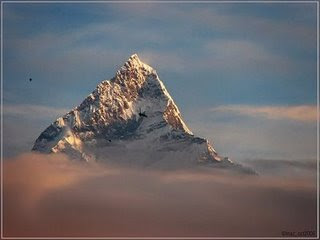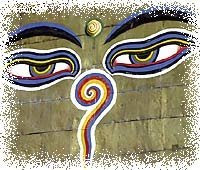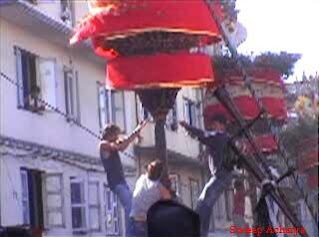Nepal
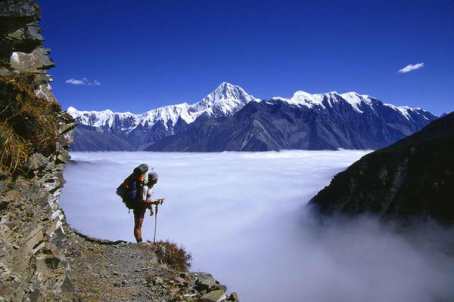
Nepal is one of the richest countries in the world in terms of bio-diversity due to its unique geographical position and altitude variation. The elevation of the country ranges from 60 meters above sea level to the highest point on earth, Mt. Everest at 8,848 meters, all within a distance of 150 kilometers resulting in climatic conditions from sub-tropical to arctic.
This wild variation fosters an incredible variety of ecosystems, the greatest mountain range on earth, thick tropical jungles teeming with a wealth of wildlife, thundering rivers, forested hills and frozen valleys.
Within this spectacular geography is also one of the richest cultural landscapes anywhere. The country is a potpourri of ethnic groups and sub-groups who speak over 93 languages and dialects. Nepal offers an astonishing diversity of sightseeing attractions and adventure opportunities found nowhere else on earth. And you can join in the numerous annual festivals that are celebrated throughout the year in traditional style highlighting enduring customs and beliefs.
The most exhilarating titles with which Nepal has been admired and praised by various renowned travel writers in recognition of her cultural richness:
- Living cultural Museum
- Shangri-La
- Roof of the World
- Birth place of the Apostle of Peace
- Country of Living Goddess
- City of Golden Pagodas and Parasols
- Himalayan Pilgrimage
- Nature amphitheatre
- Melting pot of Hinduism and Buddhism
- A tiny Kingdom of 103 ethnic groups and 93 spoken languages
- Birth place of Sita
- Abode of Shiva
- Land of Mysticism & Exoticism
- Land of non-stop festivals
are explicit and self-explanatory. They tell the world about our incomparable & prosperous cultural heritage.
Nature
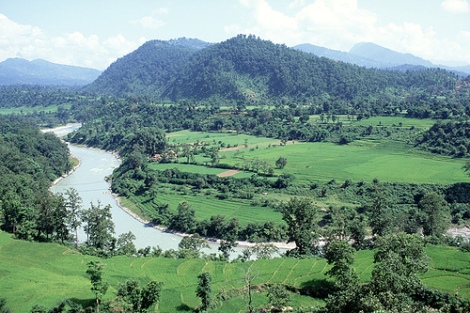
The biggest natural museum in the world
Nepal covers a span of 147,181 sq. kilometers ranging from altitude of 70 meters to 8,848 meters. Mountains, mid hills, valleys and plains dominate the geography of landlocked Nepal that extends from the Himalayan range in the north to the Indo-Gangetic lowlands in south. Mt. Everest, the highest point of the Himalayas is in Nepal.
Physical features also include green paddy terraces, wind-swept deserts, dense forests and marshy grasslands. The country is well endowed with perennial rivers, lakes and glacial lakes that originate in the Himalayas. Twenty percent of the land in the country is used for agriculture, where 0.49 percent is used for permanent crops, mainly rice.
Climatic conditions of Nepal vary from one place to another in accordance with the geographical features. In the north summers are cool and winters severe, while in south summers are sub tropical and winters mild.
The variety in Nepal’s topography provides home to wildlife like tigers, rhinos, monkeys, bears, yaks, leopards and different species of insects and birds. Nepal is a home to almost 10 percent of the world’s bird species among which 500 species are found in the Kathmandu Valley.
The country has managed to preserve some endangered species of Asia in its extensive parks and protected natural habitats. The most abundant natural resource in Nepal is water. Other resources found here are quartz, timber, lignite, copper, cobalt, iron ore and scenic beauty.
People and Culture
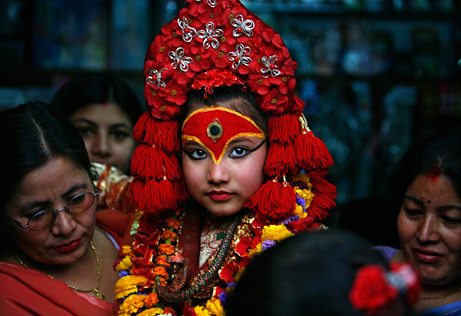 The population of Nepal was recorded to be about 25 million as of July 2002. Eighty-six percent of Nepalis follow Hinduism, while eight percent follow Buddhism and three percent follow Islam. The population comprises various groups of different races which are further divided into different castes. The distinction in caste and ethnicity is understood more easily with a view of customary layout of the population.
The population of Nepal was recorded to be about 25 million as of July 2002. Eighty-six percent of Nepalis follow Hinduism, while eight percent follow Buddhism and three percent follow Islam. The population comprises various groups of different races which are further divided into different castes. The distinction in caste and ethnicity is understood more easily with a view of customary layout of the population.
Some of the main groups are such: Gurungs and Magars who live mainly in the western region; Rais, Limbus and Sunwars who live in the eastern mid hills; Sherpas, Manangpas and Lopas who live near the mountains of Everest, Annapurna and Mustang respectively; Newars who live in and around the capital valley of Kathmandu; Tharus, Yadavas, Satar, Rajvanshis and Dhimals who live in the Terai region; and Brahmins, Chhetris and Thakuris generally spread over all parts of the country.
Nepali is the official language of the state, spoken and understood by 100 percent of the population. Multiple ethnic groups speak more than a dozen other languages in about 93 different dialects. English is spoken by many in government and business offices. It is the mode of education in most private schools of Kathmandu and some other cities.
Ethnic Distribution
The Northern Himalayan People
In the northern region of the Himalayas are the Tibetan-speaking groups namely Sherpas, Dolpas, Lopas, Baragaonlis, Manangis. The Sherpas are mainly found in the east in the Solu and Khumbu region; the Baragaonlis and Lopas live in the semi-deserted areas of Upper and Lower Mustang in the Tibetan rain-shadow area; the Managis live in Manang district area; while the Dolpas live in Dolpa district of West Nepal, one of the highest settlements on earth at 4,000 meters.
The Middle Hills and Valley People
Several ethnic groups live together in harmony in the middle hills and valleys. Among them are the Magars, Gurungs, Tamangs, Sunuwars, Newars, Thakalis, Chepangs and majority of Brahmans and Chhetris. The Brahmans and Chhetris have long dominance in all pervading social, religious and political realms. There are also some occupational castes namely: Damai (tailor), Sarki (cobbler), Kami (blacksmith) and Sunar (goldsmiths). Though, there exist numerous dialects, the language of unification is the national language, Nepali.
Ethnic Diversity in the Kathmandu Valley
Kathmandu Valley represents a cultural cauldron of the country, where, people from varied backgrounds have come together to present a melting pot. The natives of the Kathmandu Valley are the Newars. Newari culture is an integration of both Hinduism and Buddhism. The Newars of Kathmandu Valley were traders or farmers by occupation in the old days.
The main ethnic groups in Terai are Tharus, Darai, Kumhal, Majhi and other groups that have roots in India. They speak north Indian dialects like Maithili, Bhojpuri. Owing to the fertile plains of Terai, most inhabitants live on agriculture. There are, however, some occupational castes like Majhi (fisherman), Kumhal (potter) and Danuwar (cart driver).



